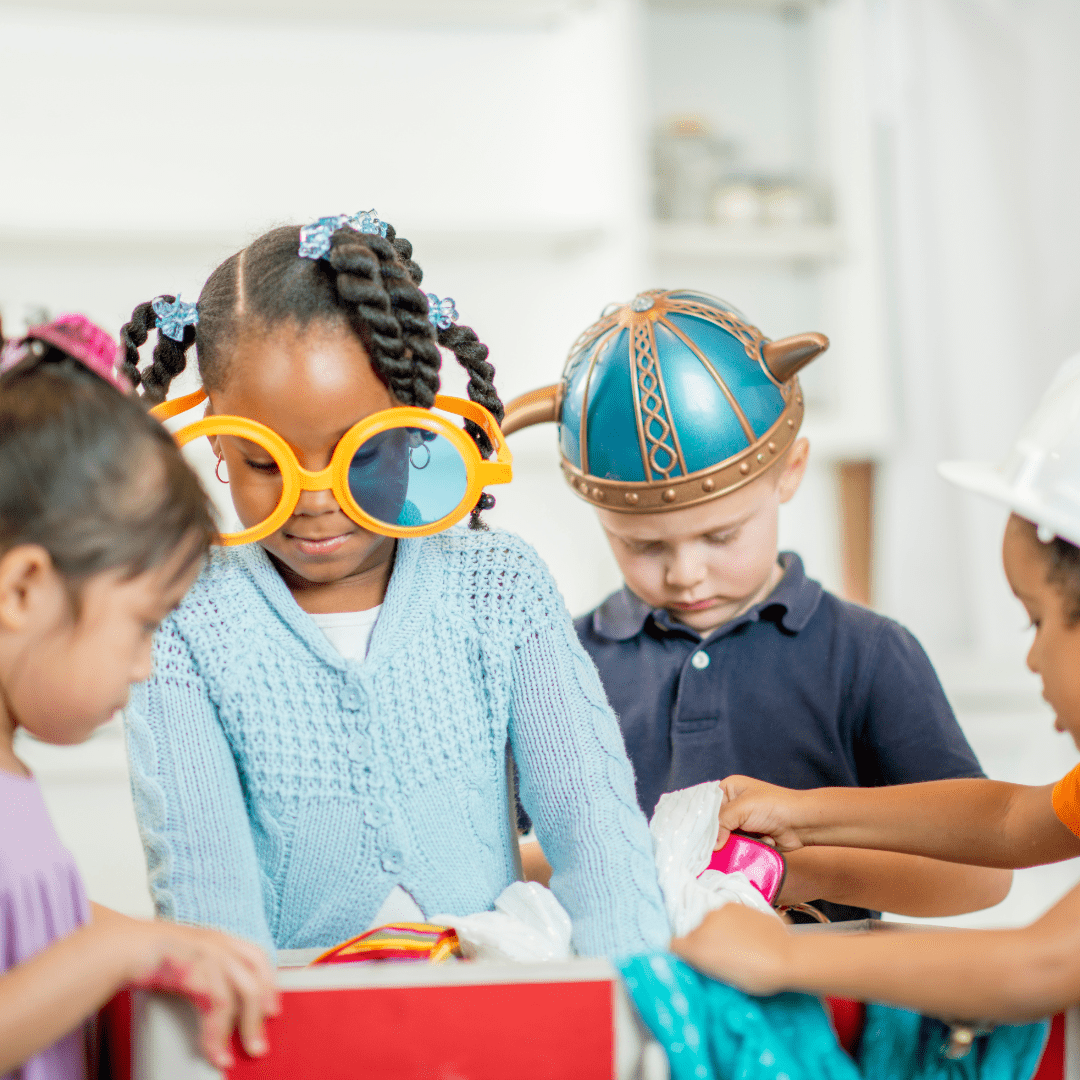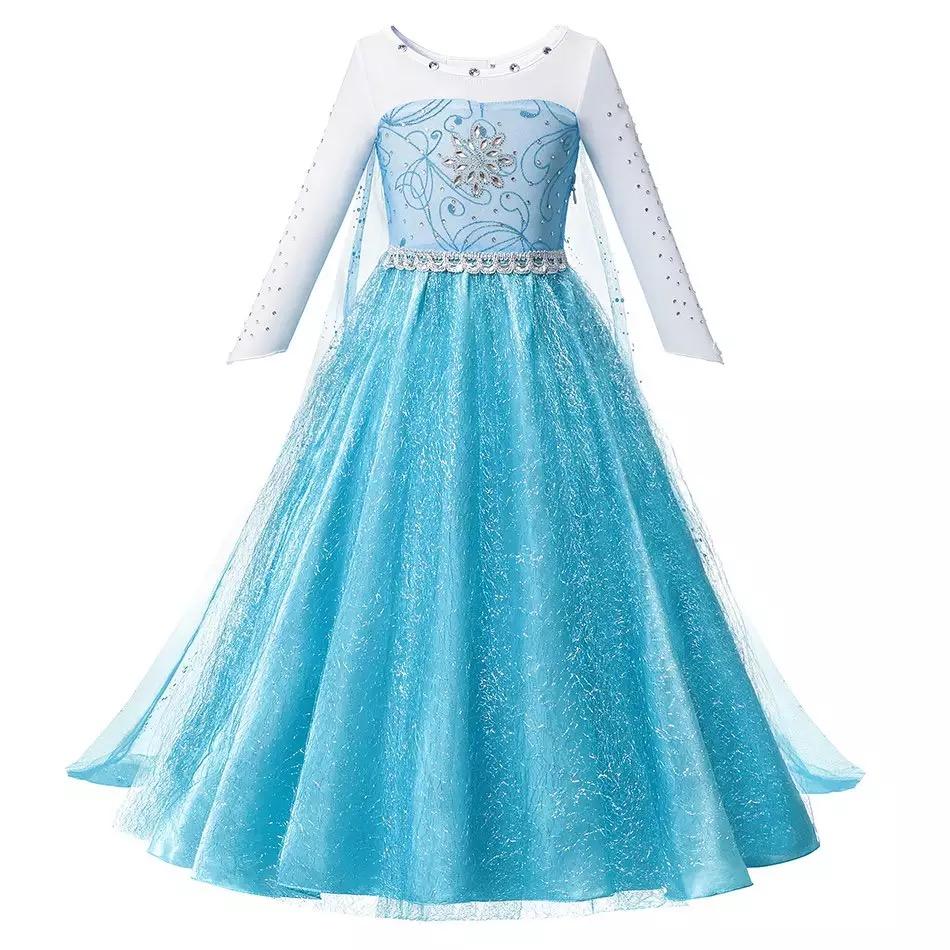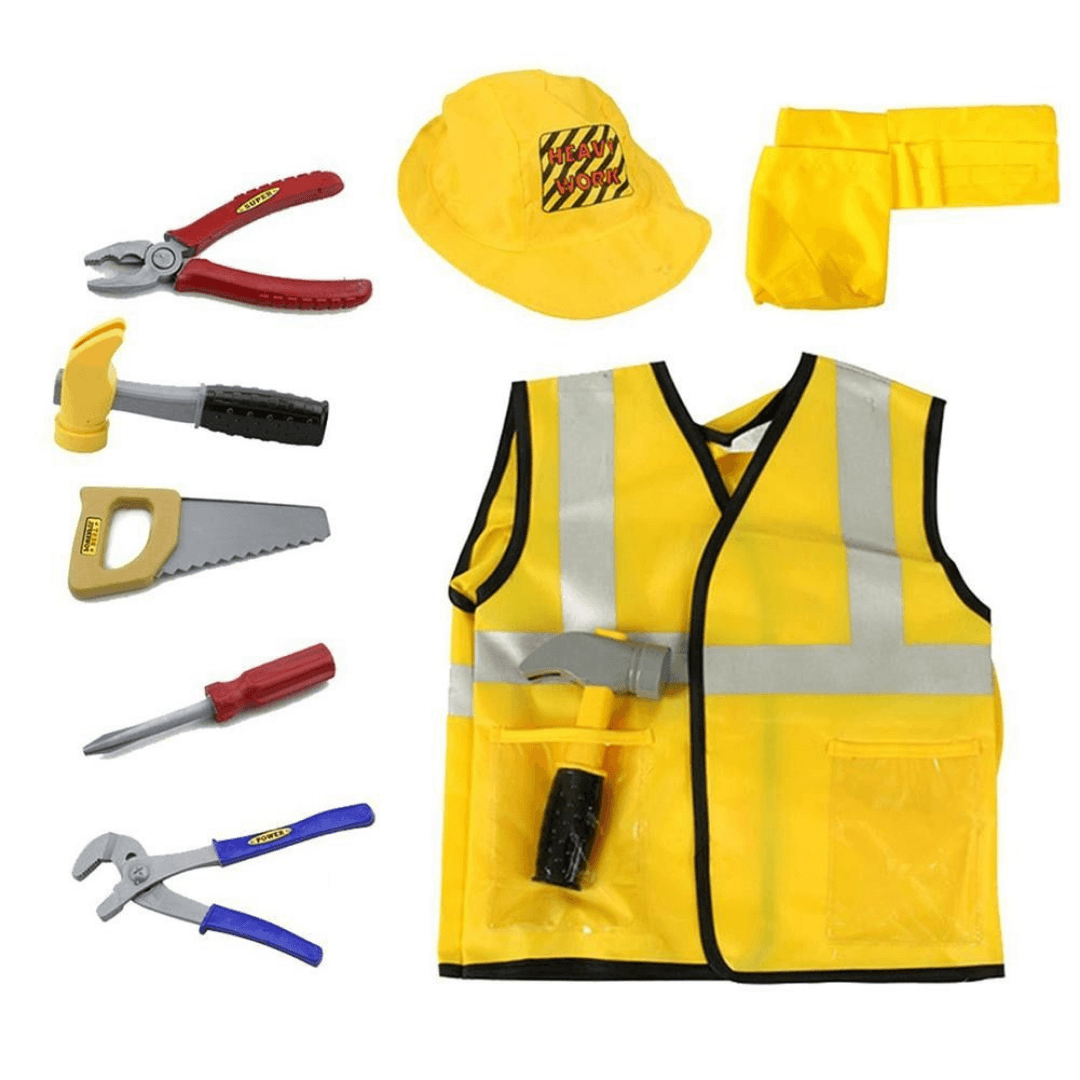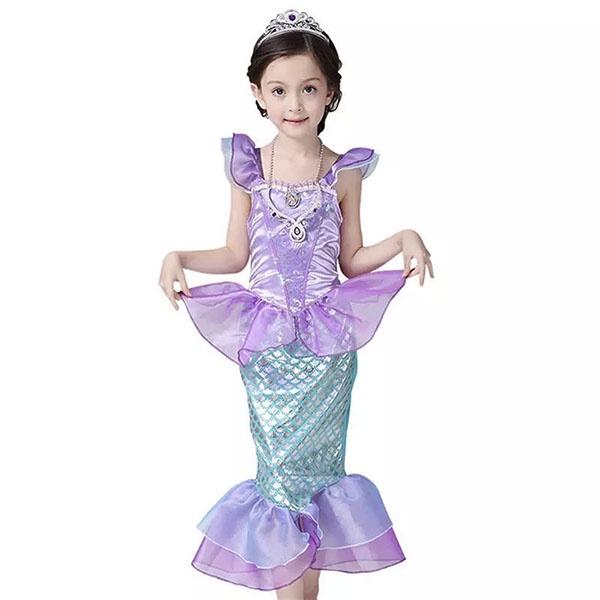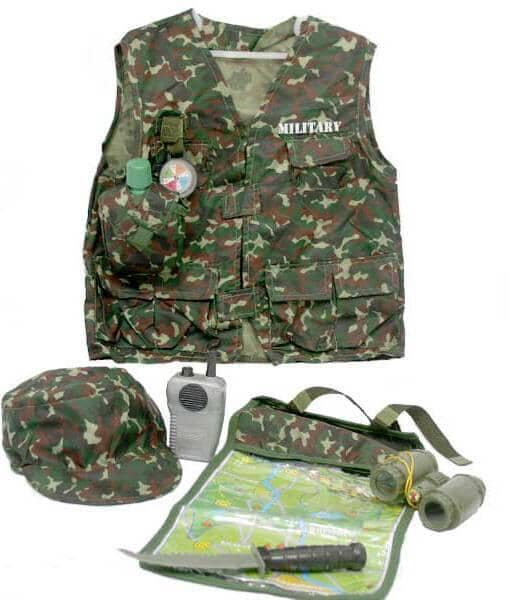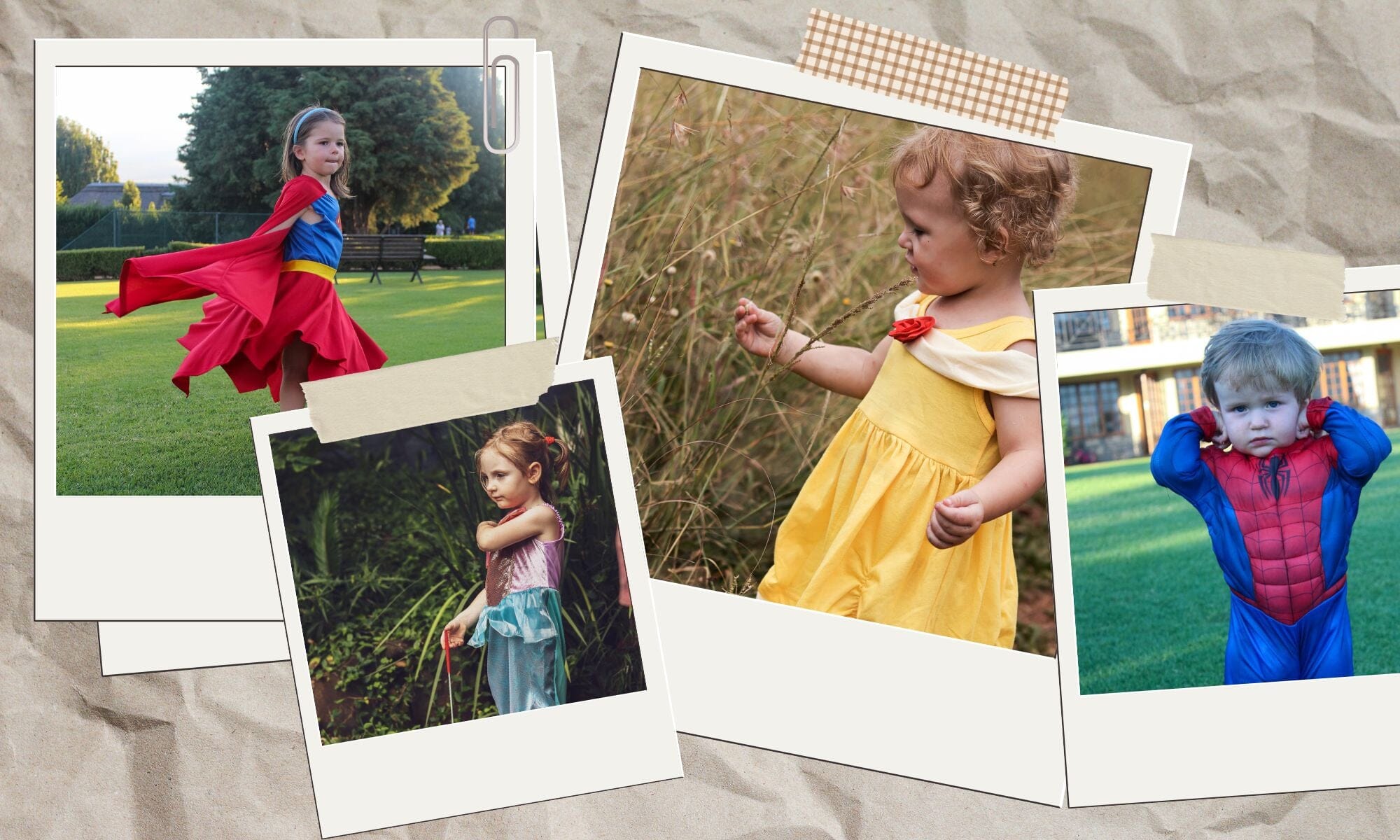Imagination and make-believe are not only surprisingly powerful but also necessary to help your little one grow to their full potential. That sounds dramatic - imaginary play, really? - but it’s backed by research and best of all, it’s pretty easy to implement. There is a good chance your kid is doing it already, with very little prompting.
“This type of play is disappearing from pre-schools,” laments Lara Schoenfeld, the founder of Nanny n Me, occupational therapist and mom to 3 kids, “Imaginary play is seen as frivolous compared to reading and writing.” Because of this, Lara developed Play Sense with the famous baby expert Meg Faure (who you might know from Sleep Sense, Baby Sense, and her app, Parent Sense) and ensured the curriculum had a heavy focus on pretend play. Lara explains, “The research shows that imaginary play develops self-regulation, emotional intelligence, and all the higher mental processes as well. When I wrote the curriculum for this course, I thought, ‘What would be the super skill I could instil?’ It came out as self-regulation.”

Benefits of imaginary play
There are many advantages to encouraging make-believe. Lee-Anne Lewis, a Johannesburg-based educational psychologist, sees the importance of this type of play in her work. She and Lara explain some tangible benefits:
-
Self-regulation: Wanting to wiggle, but keeping still, wanting to grab, but waiting your turn to be the doctor - these are all examples of someone calming and regulating themselves in order to play a game. This is a critical skill for success as an adult - where you are in control of your emotions, and not the other way around.
-
Problem-solving: “The children need to decide what role they each are and how each scenario will be played out,” Lee-Anne says.
-
Impulse regulation: Lara points out that imaginary play gives you a structure around which to control your impulses. An example she loves is that wild, sensory-seeking boy standing dead still when they pretend to be soldier standing guard. “They are controlling their impulses in that moment to perform a role and this process allows that,” she says.
-
Building empathy: Apart from skills like turn-taking, which are hard in normal play but seemingly easy in imaginary play, Lee-Anne says, “Through role-playing, either individually or with their peers, children act out parents, firefighters, doctors, nurses, and teachers which are all roles in society to assist with nurturing and helping others.”
-
Developing vocabulary: Explains Lee-Anne, “Through role-playing, children may use words that the specific chosen character may say.” An example that comes to mind is the word “Frozen!” shouted across a lounge to freeze the offending parent - as I’m sure many parents have experienced!
-
Motor skills: Dress-up clothes accentuate both fine motor skills, through the actions like closing buttons and putting on accessories, and gross motor skills like “jumping like a frog or superhero, flying like a fairy or crawling like a baby,” says Lee-Anne.
-
Develops abstract thinking: Lara explains that children move from the concrete to the abstract, and the skills you learn in imaginary play are the building blocks for skills that children need both in school and also in life. There are two elements to this:
- Developing abstract thought: From 18 months, kids are able to take something concrete and turn it into something abstract. A tennis ball is a dinosaur egg, a block is a “vroom vroom”, for example. Maths, with numbers, and reading, with letters, both require taking an abstract symbol and turning it into a concrete concept.
-
Motor planning: This is an Occupational Therapy term and one of the most common reasons school-age kids are sent to OTs, says Lara. Motor planning is “the ability to conceive, plan, and carry out a skilled, non-habitual motor act in the correct sequence from beginning to end.” This includes acts like getting dressed (socks go before shoes, for example), and in school, learning how to copy things from the blackboard into your notebook. Getting dressed in dress-up clothes, or pretending to have a role that requires a sequence of actions (like a shop-teller, or doctor) helps develop this skill.
Best of all, for many households in South Africa, this is a very affordable play option. “One of the best parts of learning through play is that it’s possible without the use of any toys at all,” says Sesame Workshop South Africa’s Director of Education and Outreach, Mari Payne. “Many of South Africa’s children do not have access to many toys, but play is something every child can do, using their imagination along with available household items or recycled materials.”
Parenting dilemmas: my child is pretending to be a villain and my boy is wearing pink!

Another benefit of imaginary play is that it allows children to explore roles - what’s it like to be the mommy? How does it feel to be a daddy? What’s it like to be Elsa, or Skye? “The girl needs to be the daddy every now and then,” says Lara, “That’s the whole point. They need to play these different roles and we are making it weird when it doesn’t have to be. It’s when we don’t let them play it out that it becomes an issue.”
Dressing up like Maleficent doesn’t make your child a bad person - it means they’re exploring and “trying on” a different persona. That’s healthy and doesn’t mean anything for your child’s personality and long-term development. Lara actively encourages her boys to play with dolls and says, “Maybe if more boys played with dolls, more men would be better fathers.”
Key takeaway
Imaginary play - all of it! - is crucial for your child’s development. Encourage it as much as you can. Don’t take over. Let them be the boss and indulge in some silliness with them - and you’ll be reaping the benefits for years to come.


